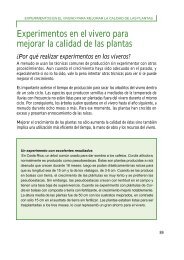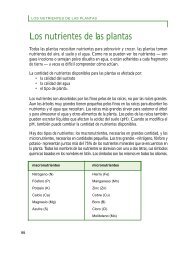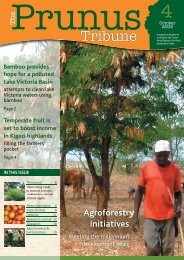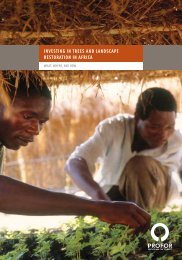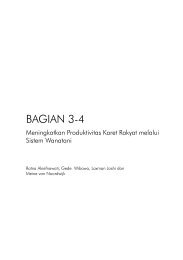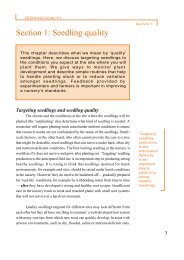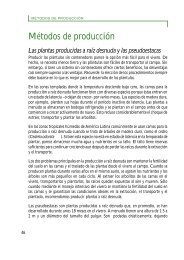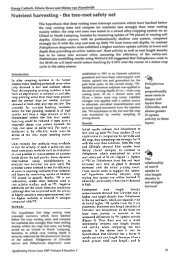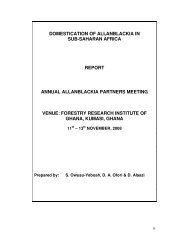Section 5: Nursery and plant hygiene - World Agroforestry Centre
Section 5: Nursery and plant hygiene - World Agroforestry Centre
Section 5: Nursery and plant hygiene - World Agroforestry Centre
Create successful ePaper yourself
Turn your PDF publications into a flip-book with our unique Google optimized e-Paper software.
NURSERY AND PLANT HYGIENEActions to cure infected <strong>plant</strong>sIn instances of pest or disease attack, you will have to decide whether touse physical, biological or chemical pest management.In areas where manual labour is readily available, <strong>and</strong> when the incidenceis not very severe, collecting of pests or diseased leaves from the seedlings byh<strong>and</strong> <strong>and</strong> destroying them may be practical. Biological agents such as parasiticwasps can be used but they are not available everywhere. Successful studieswith various agroforestry tree species, such as Gliricida sepium, Erythrinaspp., Calli<strong>and</strong>ra calothyrsus <strong>and</strong> Leucaena leucocephala have been carriedout by the Institute of Biological Control, the International <strong>Centre</strong> for InsectPhysiology <strong>and</strong> Ecology <strong>and</strong> other institutions which can provide moreinformation.However desirable the use of biological methods, chemical sprays ordrenches are still in most cases the methods of choice. These pesticides actquickly, <strong>and</strong> often they are selective so they do not destroy beneficial organisms.For important horticultural crops in temperate zones, pest occurrence thresholdshave been published, below which the use of pesticides is not recommended.For tropical trees, notably agroforestry tree species, no such thresholds exist.We recommend that nursery managers develop them for their local conditions.For example, you could decide to spray with an insecticide against aphids onlyif these are detected on more than half of the stock, or to use a miticide againstspider mites only if more than 10% of <strong>plant</strong>s show symptoms. Of course thesethresholds depend on the species <strong>and</strong> their susceptibility to the pests, <strong>and</strong>developing them requires intimate knowledge of the species.<strong>Section</strong> 5In areaswheremanuallabour isreadilyavailable,<strong>and</strong> whentheincidenceis not verysevere,collectingof pests ordiseasedleaves fromthe seedlingsby h<strong>and</strong> <strong>and</strong>destroyingthem maybe practical.63






